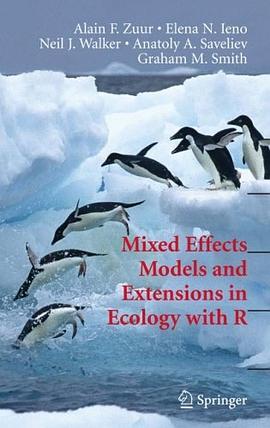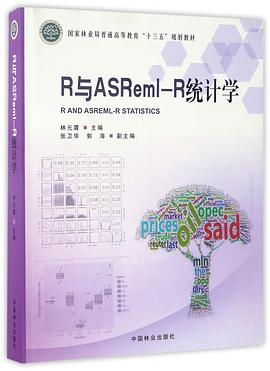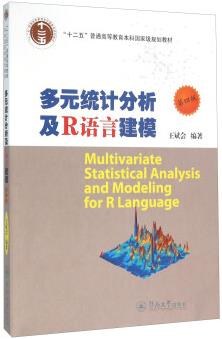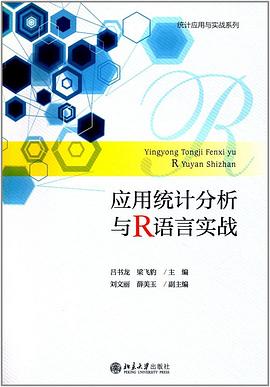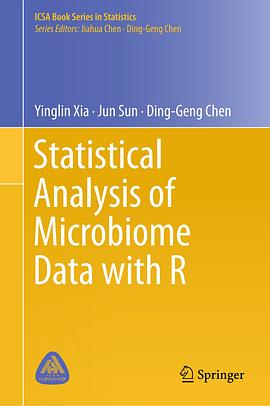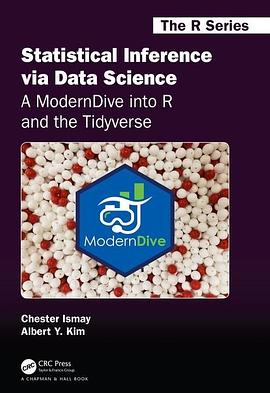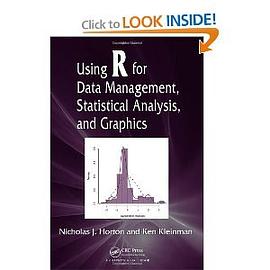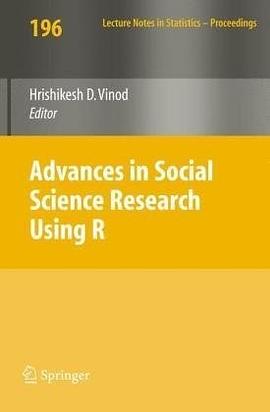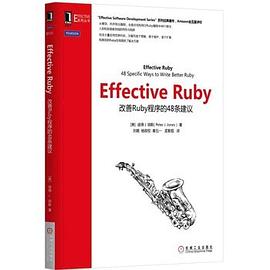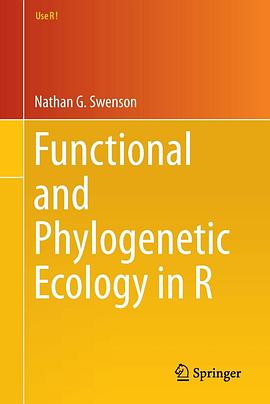

具體描述
Functional and Phylogenetic Ecology in R is designed to teach readers to use R for phylogenetic and functional trait analyses. Over the past decade, a dizzying array of tools and methods were generated to incorporate phylogenetic and functional information into traditional ecological analyses. Increasingly these tools are implemented in R, thus greatly expanding their impact. Researchers getting started in R can use this volume as a step-by-step entryway into phylogenetic and functional analyses for ecology in R. More advanced users will be able to use this volume as a quick reference to understand particular analyses. The volume begins with an introduction to the R environment and handling relevant data in R. Chapters then cover phylogenetic and functional metrics of biodiversity; null modeling and randomizations for phylogenetic and functional trait analyses; integrating phylogenetic and functional trait information; and interfacing the R environment with a popular C-based program. This book presents a unique approach through its focus on ecological analyses and not macroevolutionary analyses. The author provides his own code, so that the reader is guided through the computational steps to calculate the desired metrics. This guided approach simplifies the work of determining which package to use for any given analysis. Example datasets are shared to help readers practice, and readers can then quickly turn to their own datasets.
著者簡介
圖書目錄
1.1 Why Phylogenetics and Functional Traits in Ecology? ..................... 1
1.2 Why R? .............................................................................................. 2
1.3 Structure and How to Use This Book?............................................... 3
1.4 Setting Working Directories and Package Installation ...................... 5
2 Phylogenetic Data in R ............................................................................. 9
2.1 Objectives ........................................................................................... 9
2.2 Loading Phylogenies into R and the Structure
of the “Phylo” Class ........................................................................... 9
2.3 Plotting Phylogenetic Trees in R ....................................................... 12
2.4 Manipulating and Calculating Additional Information
from Phylogenetic Trees in R ............................................................ 15
2.5 Simulating Phylogenies in R .............................................................. 22
2.6 Conclusions ........................................................................................ 25
2.7 Exercises ............................................................................................ 25
3 Phylogenetic Diversity .............................................................................. 27
3.1 Objectives ........................................................................................... 27
3.2 Background ........................................................................................ 27
3.3 “Community” Datasets ...................................................................... 29
3.4 Tree-Based Measures of Phylogenetic Diversity ............................... 32
3.5 Distance-Based Measures of Phylogenetic Diversity ........................ 41
3.5.1 Pairwise Measures ................................................................. 41
3.5.2 Nearest Neighbor Measures ................................................... 48
3.6 Comparing Metrics ............................................................................ 52
3.7 Conclusions ........................................................................................ 54
3.8 Exercises ............................................................................................ 55
4 Functional Diversity .................................................................................. 57
4.1 Objectives ........................................................................................... 57
4.2 Background ........................................................................................ 57
4.3 Quantifying the Functional Composition of Communities
Using the Moments of Trait Distributions ......................................... 58
4.4 Dendrogram-Based Versus Euclidean Distance-Based
Measures of Functional Diversity ...................................................... 64
4.4.1 Generating Trait Distance Matrices ....................................... 65
4.4.2 Generating Trait Dendrograms .............................................. 68
4.4.3 Pairwise and Nearest Neighbor Measures ............................. 70
4.4.4 Ranges and Convex Hulls ...................................................... 76
4.4.5 Other Measures ...................................................................... 80
4.5 Comparing Metrics of Functional Diversity ...................................... 80
4.6 Conclusions ........................................................................................ 81
4.7 Exercises ............................................................................................ 83
5 Phylogenetic and Functional Beta Diversity ........................................... 85
5.1 Objectives ........................................................................................... 85
5.2 Background ........................................................................................ 85
5.3 Tree-Based Measures of Phylogenetic Beta Diversity ....................... 87
5.3.1 UniFrac .................................................................................. 87
5.3.2 Phylogenetic Sorenson’s Index .............................................. 94
5.4 Distance-Based Measures of Phylogenetic
and Functional Beta Diversity ........................................................... 95
5.4.1 Pairwise Measures ................................................................. 95
5.4.2 Nearest Neighbor Measures ................................................... 100
5.5 Other Metrics ..................................................................................... 104
5.6 Comparing Metrics ............................................................................ 105
5.7 Conclusions ........................................................................................ 108
5.8 Exercises ............................................................................................ 108
6 Null Models ................................................................................................ 109
6.1 Objectives ........................................................................................... 109
6.2 Background ........................................................................................ 109
6.2.1 Why Use Null Models for Phylogenetic
and Functional Analyses? ...................................................... 110
6.2.2 Calculating Standardized Effect Sizes,
Quantiles, and P-Values ......................................................... 114
6.3 Classes of Null Models in Phylogenetic
and Functional Analyses of Species Assemblages? .......................... 116
6.4 Randomizing Community Data Matrices in R ................................... 116
6.4.1 Unconstrained Randomizations ............................................. 117
6.4.2 Constrained Randomizations ................................................. 118
6.5 Randomizing Phylogenetic Data ........................................................ 120
6.5.1 Unconstrained Randomizations ............................................. 120
6.5.2 Constrained Randomizations ................................................. 128
6.6 Randomizing Functional Trait Data ................................................... 132
6.6.1 Unconstrained Randomizations ............................................. 133
6.6.2 Constrained Randomizations ................................................. 134
6.7 Null Models for Phylogenetic and Functional
Alpha Diversity ................................................................................ 136
6.8 Null Models for Phylogenetic and Functional
Beta Diversity .................................................................................. 141
6.9 Conclusions ...................................................................................... 145
6.10 Exercises .......................................................................................... 146
7 Comparative Methods and Phylogenetic Signal .................................... 147
7.1 Objectives ........................................................................................ 147
7.2 Trait Correlations ............................................................................. 147
7.2.1 Independent Contrasts .......................................................... 148
7.2.2 Phylogenetic Generalized Least Squares ............................. 150
7.2.3 Phylogenetic Eigenvector Regression .................................. 151
7.3 Quantifying Phylogenetic Signal ..................................................... 154
7.3.1 Mantel Test ........................................................................... 155
7.3.2 Blomberg’s K and Signifi cance Tests .................................. 156
7.3.3 Pagel’s Lambda .................................................................... 159
7.3.4 Standardized Contrast Variance, Unstandardized
Contrast Means, and Randomization Tests .......................... 162
7.3.5 Phylogenetic Eigenvectors ................................................... 165
7.4 Quantifying the Timing and Magnitude of Trait Divergences ......... 165
7.5 Conclusions ...................................................................................... 171
7.6 Exercises .......................................................................................... 171
8 Partitioning the Phylogenetic, Functional, Environmental,
and Spatial Components of Community Diversity ................................ 173
8.1 Objectives ........................................................................................ 173
8.2 Background ...................................................................................... 173
8.3 Partitioning Variation in Community Functional
Alpha Diversity by the Environment, Space,
and the Community Phylogenetic Alpha Diversity ......................... 174
8.3.1 Partitioning FD Using Multiple Regression
on Distance Matrices ............................................................ 175
8.3.2 Partitioning FD Using Principal Coordinates
of Neighbor Matrices (PCNM) and Forward Selection ....... 178
8.4 Variance Partitioning of Phylogenetic or Functional
Beta Diversity Along Environmental and Spatial Gradients ........... 179
8.4.1 Beta Diversity and Multiple Regression
on Distance Matrices ............................................................ 180
8.4.2 Partitioning Beta Diversity Using Principal Coordinates
of Neighbor Matrices (PCNM) and Forward Selection ....... 181
8.5 Integrating Phylogenetic, Trait, Environmental
and Spatial Information to Quantify the Role
of Abiotic Filtering During Community Assembly ......................... 182
8.6 Conclusions ...................................................................................... 185
8.7 Exercises .......................................................................................... 187
9 Integrating R with Other Phylogenetic and Functional
Trait Analytical Software ......................................................................... 189
9.1 Objectives ........................................................................................... 189
9.2 Background: The Development of Eco-Informatics Tools
for Phylogenetic- and Functional Trait-Based Ecology..................... 189
9.3 Phylocom ........................................................................................... 190
9.3.1 Quantifying Phylogenetic and Functional Diversity
and Dispersion in Phylocom .................................................. 191
9.3.2 Comparative Analyses in Phylocom ...................................... 197
9.3.3 Interfacing R and Phylocom for Null Modeling .................... 197
9.4 Conclusions ........................................................................................ 200
9.5 Exercises ............................................................................................ 201
References ........................................................................................................ 203
Index ................................................................................................................. 211
· · · · · · (收起)
讀後感
評分
評分
評分
評分
用戶評價
功能性狀與係統發育這兩種維度以及相關方法,是目前群落生態學研究的基本手段。這本書基本集成瞭這兩種維度的常用研究方法,還有實用性很高的code來實現。對於從事群落生態學研究的碩士、博士來說是本必讀的入門教材。有些R code有點小錯誤,但基本能找齣來。
评分功能性狀與係統發育這兩種維度以及相關方法,是目前群落生態學研究的基本手段。這本書基本集成瞭這兩種維度的常用研究方法,還有實用性很高的code來實現。對於從事群落生態學研究的碩士、博士來說是本必讀的入門教材。有些R code有點小錯誤,但基本能找齣來。
评分功能性狀與係統發育這兩種維度以及相關方法,是目前群落生態學研究的基本手段。這本書基本集成瞭這兩種維度的常用研究方法,還有實用性很高的code來實現。對於從事群落生態學研究的碩士、博士來說是本必讀的入門教材。有些R code有點小錯誤,但基本能找齣來。
评分功能性狀與係統發育這兩種維度以及相關方法,是目前群落生態學研究的基本手段。這本書基本集成瞭這兩種維度的常用研究方法,還有實用性很高的code來實現。對於從事群落生態學研究的碩士、博士來說是本必讀的入門教材。有些R code有點小錯誤,但基本能找齣來。
评分功能性狀與係統發育這兩種維度以及相關方法,是目前群落生態學研究的基本手段。這本書基本集成瞭這兩種維度的常用研究方法,還有實用性很高的code來實現。對於從事群落生態學研究的碩士、博士來說是本必讀的入門教材。有些R code有點小錯誤,但基本能找齣來。
相關圖書
本站所有內容均為互聯網搜索引擎提供的公開搜索信息,本站不存儲任何數據與內容,任何內容與數據均與本站無關,如有需要請聯繫相關搜索引擎包括但不限於百度,google,bing,sogou 等
© 2025 book.quotespace.org All Rights Reserved. 小美書屋 版权所有

